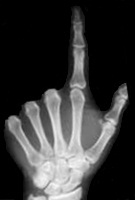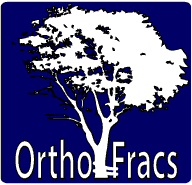Journal Club
July 2010
Pathoanatomy of First Time, Traumatic, Anterior Glenohumeral Subluxation Events
- Authors: Owens CB, Nelson BJ, Duffey ML, Mountcastle SB, Taylor DC, Cameron KL, Campbell S, DeBerardino TM.
- Institution: Keller Army Hospital, West Point, NY, USA
- Journal: J Bone Joint Surg Am. 2010 Jul;92(7):1605-11.
No outside funding
Reviewed by
Dr Josh Petterwood
MBBS | Accredited Orthopaedic Registrar
Introduction
- Attempt to define the pathoanatomy of 1st time, traumatic, anterior glenohumeral subluxation
Methodology
- Anterior shoulder subluxation events defined as
- Incomplete instability events not requiring manual reduction
- Diagnosed in patients with
- A painful shoulder event and feeling of transient instability
- Anterior apprehension, relief with relocation, anterior translation on load-sift testing
- A painful shoulder event and feeling of transient instability
- Incomplete instability events not requiring manual reduction
- Prospective evaluation 2004-2005
- Closed cohort military cadets
- Included only those with a 1st time, traumatic event who had undergone MRI within 2 weeks of the injury
- Evaluation included:
- Demographics
- Mechanism of injury
- Examination findings
- Plain XR
- MRI
- Hill Sachs
- Bankart
- Hill Sachs
- Surgical findings
- Demographics
- Follow up
- Cadet Illness and Injury Tracking System
- Armed Forces Health Longitudinal Technology Application medical record
- Phone/email
- Recurrent instability/return to activit
- Cadet Illness and Injury Tracking System
Results
- Total cohort 4141
- 38 events over 1 academic year
- 27 included in study
- 11 excluded as did not have MRI in first 2 weeks
- 27 included in study
- 22 men, 5 women
- Mean age 20 (18-24)
- Hand dominance
- 13 dominant, 10 non-dominant, 4 unknown
- Mean age 20 (18-24)
- 38 events over 1 academic year
- Activities
- Boxing 10
- Indoor obstacle course 7
- Rugby 5
- Skiing
- Snowboarding
- Football
- Cheerleading
- Military training
- Boxing 10
- Mechanism
- Fall 5
- Tackle 5
- Missed punches 5
- Fall 5
- Plain XR
- 3 bony Bankart
- 2 Hill Sachs
- 3 bony Bankart
- MRI
- 26 Bankart (6 bony)
- 25 Hill Sachs
- 26 Bankart (6 bony)
- Management
- 10 patients arthroscopic Bankart repair within 3 months
- 4 went onto repair after experiencing recurrent instability
- Of this 14
- 13 had a Bankart lesion at the time of surgery
- ie 1 Bankart lesion on MRI not confirmed at OR
- 13 had a Bankart lesion at the time of surgery
- 10 patients arthroscopic Bankart repair within 3 months
- 13 patients managed non-operatively
- 4 recurrent instability
- 2 lost to follow up
- 7 back to active duty
- 4 recurrent instability
Discussion
- Dislocation well studied with subluxation events disproportionately under evaluated
- 85% of instability events actually subluxations that do not require manual reduction (Owens 2007)
- Subluxation events have similarly high rates of both Bankart and Hill Sachs lesions
- Therefore current classification of instability events is not adequate – developed a new aspect of classification termed transiient luxation
- Transient luxations
- Complete dislocation with spontaneous reduction
- Evidenced by Bankart and Hill Sachs
- Complete dislocation with spontaneous reduction
- Implication for management
- More likely to go onto recurrent instability
- A number of papers looking at presence of Hill Sachs and Bankart lesions in anterior shoulder subluxation
- All high
- Mostly in recurrent instability
- All high
- No other study evaluating pathological changes in 1st time, traumatic anterior subluxation
- Study Conclusions
- Subluxation events are common
- High rate of pathological changes in traumatic, first time, anterior subluxations
- Presence of Hill Sachs and Bankart lesions on MRI may indicate a spontaneously reducing dislocation
- These injuries should be termed transient luxations
- MRI is a useful prognostic tool in such events
- Subluxation events are common
Pros of Study
- Strengths
Prospective
Numbers
MRI within 2 weeks
Cons of Study
- Follow up
Take home message
- Anterior glenohumeral subluxation/dislocation is a spectrum of injury
- Incidence of Bankart lesions is very high in 1st time subluxation events
- These patients should be evaluated with MRI
- To give indication of prognosis
- Determine management
- To give indication of prognosis
- More research required to determine if natural history is the same as dislocators
Webpage Last Modified:
10 August, 2010



